 Under the Versailles peace Treaty, Germany until the early 1930s did not produce armored vehicles, and only in 1932 the firm “Daimler-Benz” has started the production for the army of light biaxial armored car Kfz. 13 and Kfz. 14 machine – gun and communication, weighing just over 2 tons They were created on the chassis of the machine, “Adler DDG” (Adler 3Gd) engine 60 HP, had an open top body of the 8-mm plates and armed with a 7.92 mm MG13 machine guns mounted in the middle of the body behind armored shields. Their crew consisted of two or three people.
Under the Versailles peace Treaty, Germany until the early 1930s did not produce armored vehicles, and only in 1932 the firm “Daimler-Benz” has started the production for the army of light biaxial armored car Kfz. 13 and Kfz. 14 machine – gun and communication, weighing just over 2 tons They were created on the chassis of the machine, “Adler DDG” (Adler 3Gd) engine 60 HP, had an open top body of the 8-mm plates and armed with a 7.92 mm MG13 machine guns mounted in the middle of the body behind armored shields. Their crew consisted of two or three people.
Read more
 Few people of Leningrad, occupancies that August day in 1935, near the Peter and Paul fortress, the Neva river, witnessed the unusual spectacle. On the river, confidently slicing through low, the wave, floated… tanks. Here all seven turned sharply to the shore, and a few minutes of armored amphibians were already on the sand. Thus ended a 600-kilometer test transition amphibious tanks T-37 on the rivers Luga, Shelon, lake Ilmen and further along the new Ladoga canal and the Neva river.
Few people of Leningrad, occupancies that August day in 1935, near the Peter and Paul fortress, the Neva river, witnessed the unusual spectacle. On the river, confidently slicing through low, the wave, floated… tanks. Here all seven turned sharply to the shore, and a few minutes of armored amphibians were already on the sand. Thus ended a 600-kilometer test transition amphibious tanks T-37 on the rivers Luga, Shelon, lake Ilmen and further along the new Ladoga canal and the Neva river. Few people of Leningrad, occupancies that August day in 1935, near the Peter and Paul fortress, the Neva river, witnessed the unusual spectacle. On the river, confidently slicing through low, the wave, floated… tanks. Here all seven turned sharply to the shore, and a few minutes of armored amphibians were already on the sand. Thus ended a 600-kilometer test transition amphibious tanks T-37 on the rivers Luga, Shelon, lake Ilmen and further along the new Ladoga canal and the Neva river.
Few people of Leningrad, occupancies that August day in 1935, near the Peter and Paul fortress, the Neva river, witnessed the unusual spectacle. On the river, confidently slicing through low, the wave, floated… tanks. Here all seven turned sharply to the shore, and a few minutes of armored amphibians were already on the sand. Thus ended a 600-kilometer test transition amphibious tanks T-37 on the rivers Luga, Shelon, lake Ilmen and further along the new Ladoga canal and the Neva river.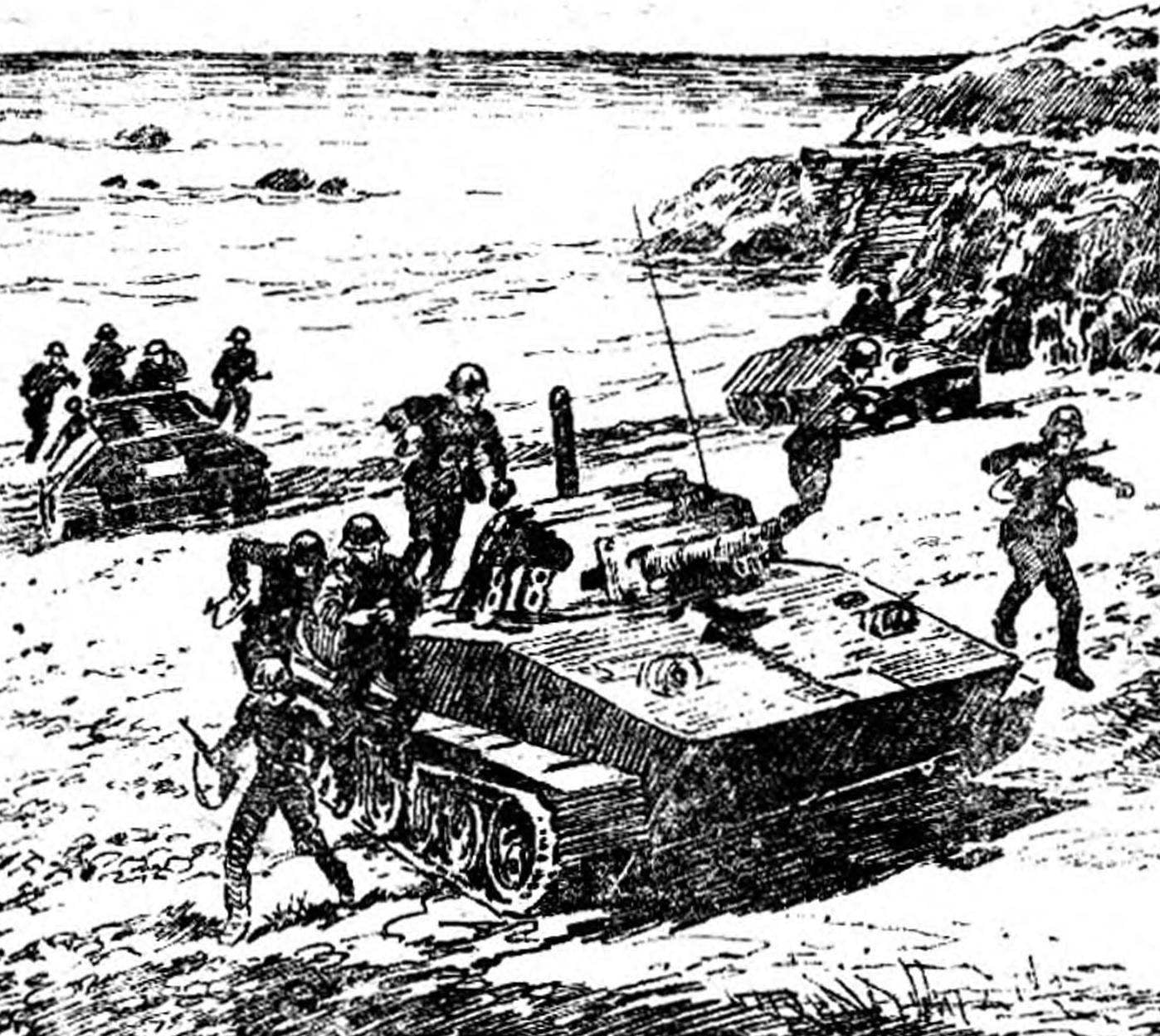

 The development of the project tanks for the British army in the early 1920s was run by the company “Vickers” — England’s largest manufacturer of weapons and armored vehicles. The new machine began to enter the army in 1922 and received specification of “Medium tank “Vickers” mark I” and the designation MK.I. Behind it rose the name of “Vickers”, “Medium”, she was also known as “Vickers” 12-ton”. Within ten years it was the only medium tank in the British army. The modification of the base sample had the designation MK.II, MK.II* (“star”) and MK.IIA issue 1926/1927.
The development of the project tanks for the British army in the early 1920s was run by the company “Vickers” — England’s largest manufacturer of weapons and armored vehicles. The new machine began to enter the army in 1922 and received specification of “Medium tank “Vickers” mark I” and the designation MK.I. Behind it rose the name of “Vickers”, “Medium”, she was also known as “Vickers” 12-ton”. Within ten years it was the only medium tank in the British army. The modification of the base sample had the designation MK.II, MK.II* (“star”) and MK.IIA issue 1926/1927.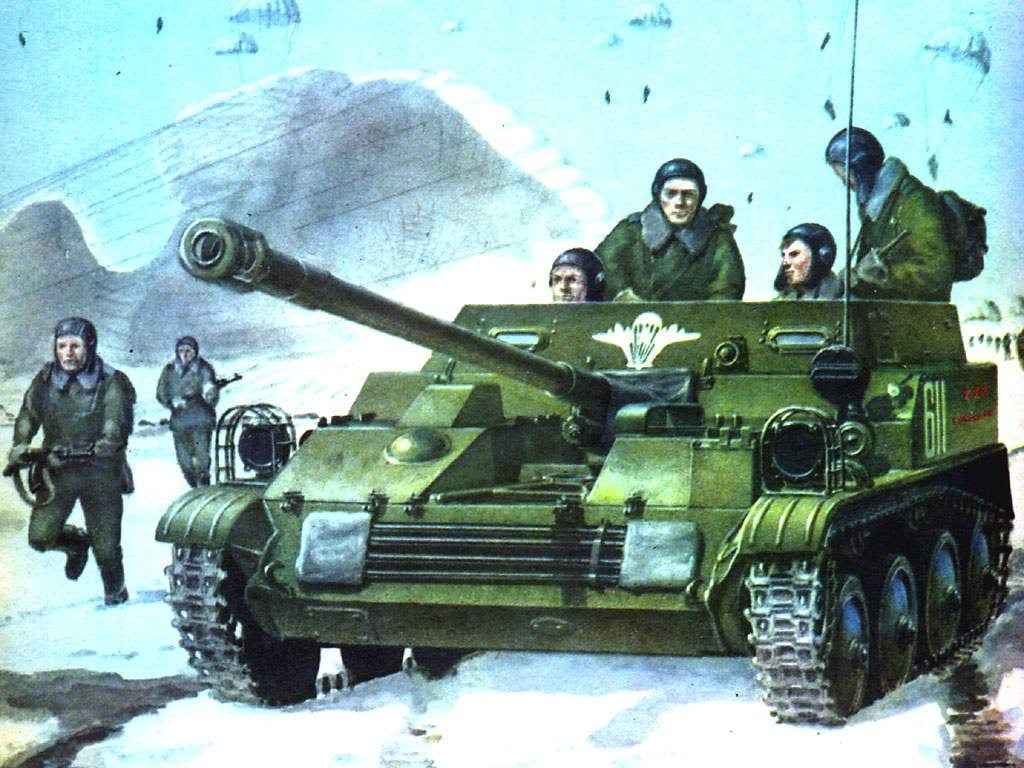
 In 1947 in accordance with the September decision of the government in the aviation experimental design Bureau (OKB-115), headed by A. S. Yakovlev, began development of a heavy landing glider Yak-14 and simultaneously — airborne self-propelled ASU-57. Caterpillar machine was built in the beginning of 1948, and, after a short factory test in April passed on field tests in the research test an armored polygon BT and MV VS (NIIBT Polygon).
In 1947 in accordance with the September decision of the government in the aviation experimental design Bureau (OKB-115), headed by A. S. Yakovlev, began development of a heavy landing glider Yak-14 and simultaneously — airborne self-propelled ASU-57. Caterpillar machine was built in the beginning of 1948, and, after a short factory test in April passed on field tests in the research test an armored polygon BT and MV VS (NIIBT Polygon).
 By the spring of 1943 in the fighting at the front emerged a qualitative leap in improving the combat capability of the German armored vehicles. There are new tanks Pz.Kpfw.VI “Tiger” with the 88-mm gun and a PZ.Kpfw.V “Panther”, which had 75-mm gun. For tanks T-34 and KV-1 to the red Army’s main opponents on the field of battle were T-IV with short-barreled 75-mm gun. 80-mm frontal armor easily able to get our armor-piercing shells.
By the spring of 1943 in the fighting at the front emerged a qualitative leap in improving the combat capability of the German armored vehicles. There are new tanks Pz.Kpfw.VI “Tiger” with the 88-mm gun and a PZ.Kpfw.V “Panther”, which had 75-mm gun. For tanks T-34 and KV-1 to the red Army’s main opponents on the field of battle were T-IV with short-barreled 75-mm gun. 80-mm frontal armor easily able to get our armor-piercing shells.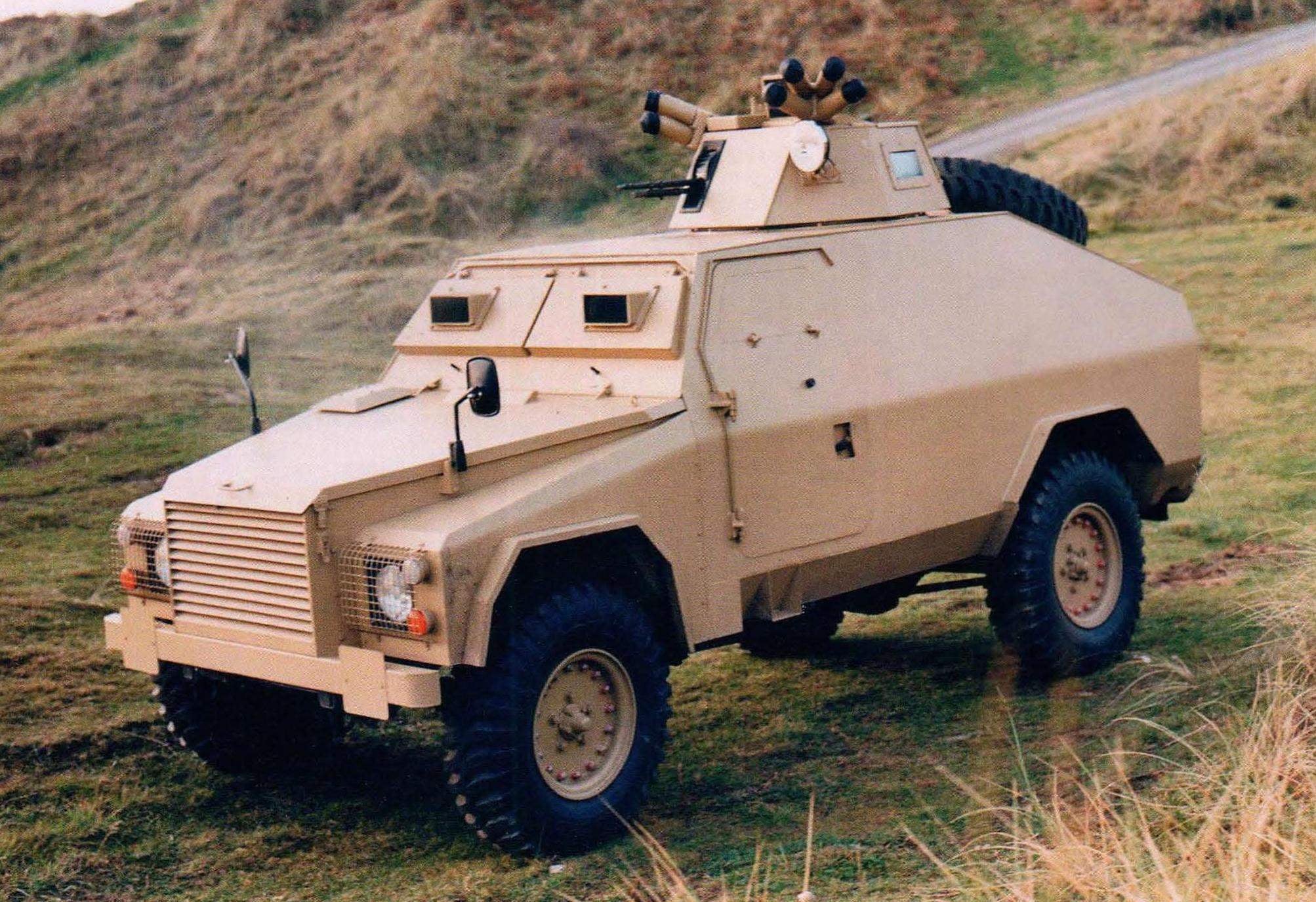
 The Shorland armored car (“Shoreland”) – joint development of Irish firms of Short Brothers and Harland (“Short Bros & Harland”) by order issued in 1961 Royal police force of Northern Ireland. According to the requirements of the armored car should be very simple, and its development is minimal time.
The Shorland armored car (“Shoreland”) – joint development of Irish firms of Short Brothers and Harland (“Short Bros & Harland”) by order issued in 1961 Royal police force of Northern Ireland. According to the requirements of the armored car should be very simple, and its development is minimal time.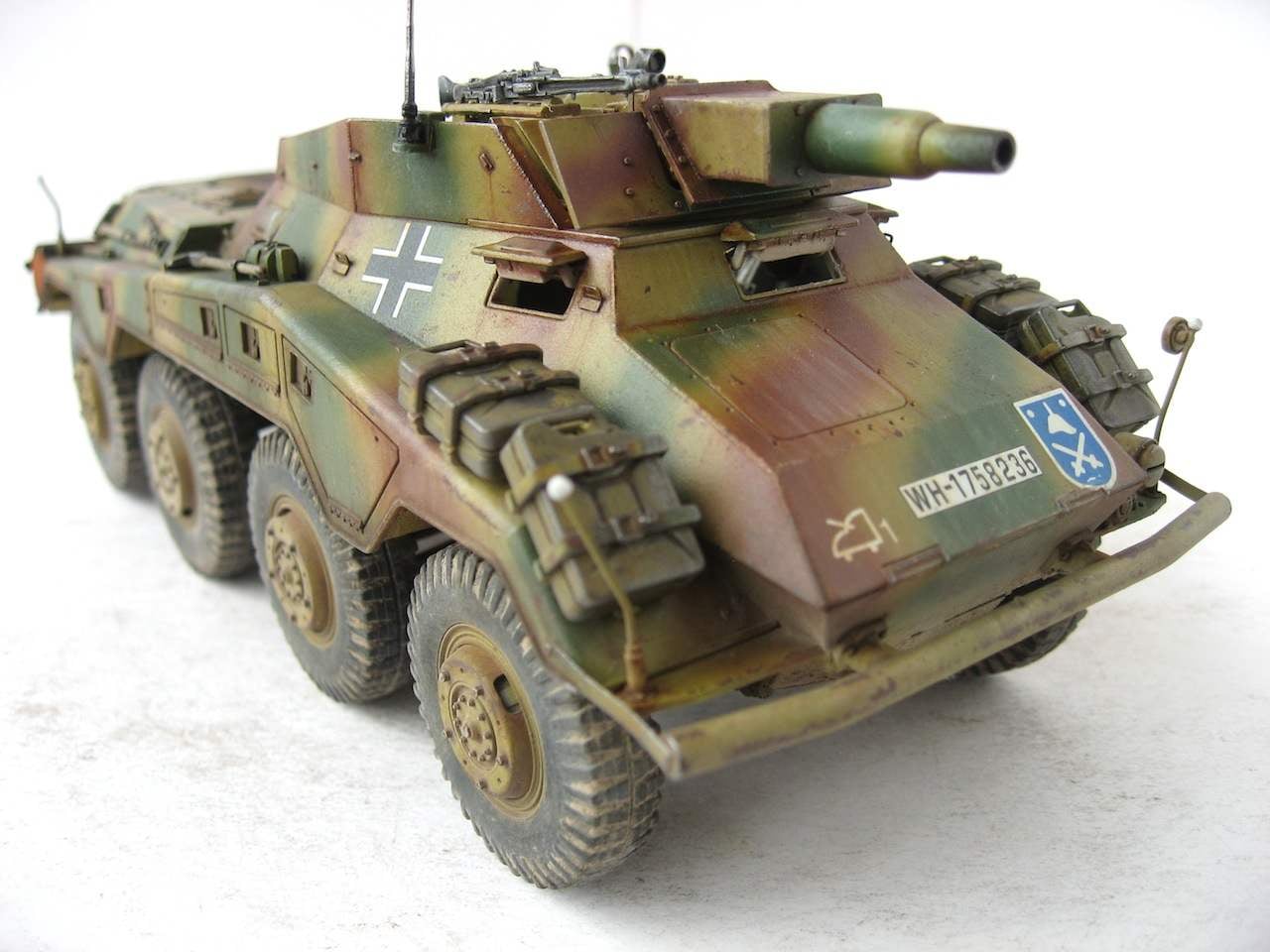
 Under the Versailles peace Treaty, Germany until the early 1930s did not produce armored vehicles, and only in 1932 the firm “Daimler-Benz” has started the production for the army of light biaxial armored car Kfz. 13 and Kfz. 14 machine – gun and communication, weighing just over 2 tons They were created on the chassis of the machine, “Adler DDG” (Adler 3Gd) engine 60 HP, had an open top body of the 8-mm plates and armed with a 7.92 mm MG13 machine guns mounted in the middle of the body behind armored shields. Their crew consisted of two or three people.
Under the Versailles peace Treaty, Germany until the early 1930s did not produce armored vehicles, and only in 1932 the firm “Daimler-Benz” has started the production for the army of light biaxial armored car Kfz. 13 and Kfz. 14 machine – gun and communication, weighing just over 2 tons They were created on the chassis of the machine, “Adler DDG” (Adler 3Gd) engine 60 HP, had an open top body of the 8-mm plates and armed with a 7.92 mm MG13 machine guns mounted in the middle of the body behind armored shields. Their crew consisted of two or three people.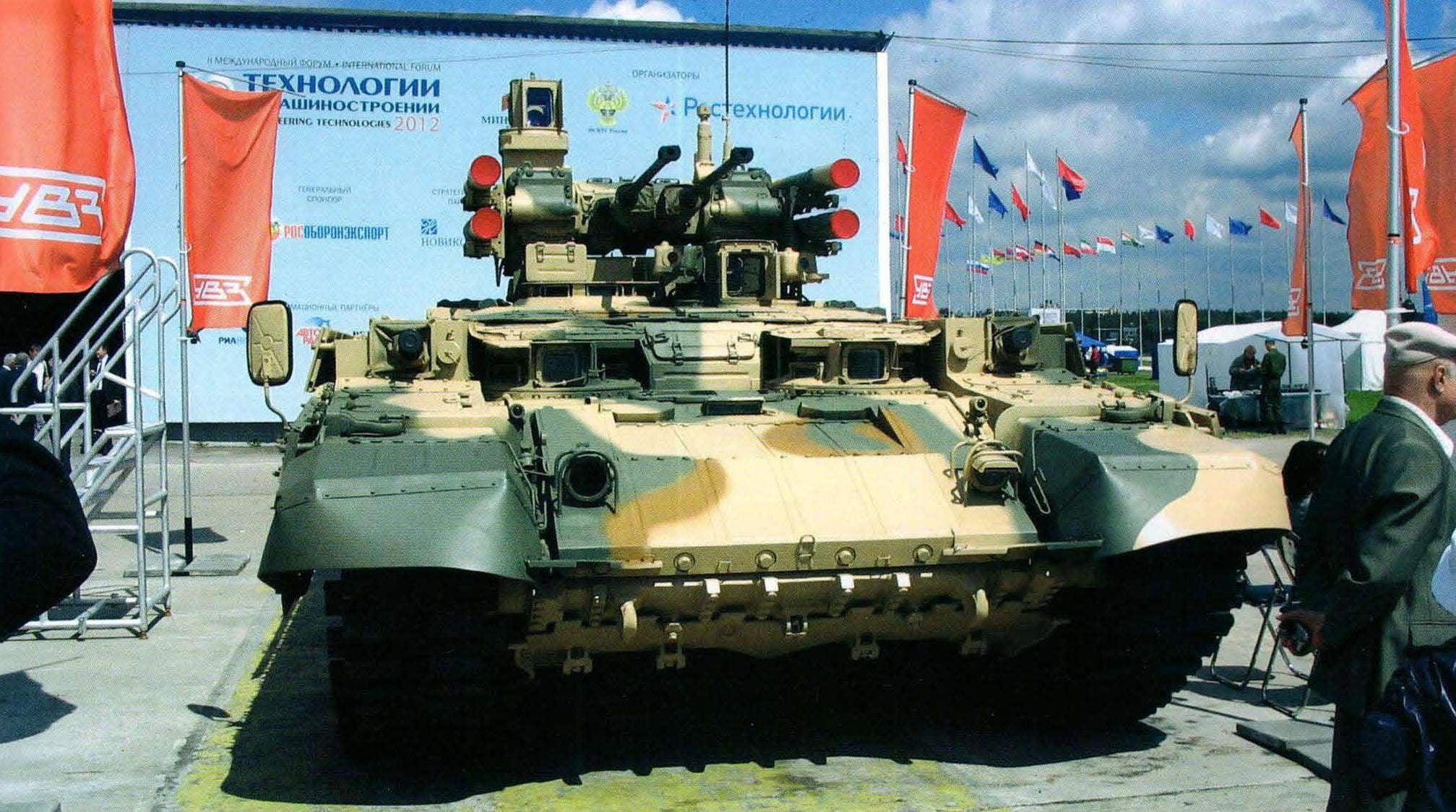
 August 31, 2011 in the main square of Astana held a military parade dedicated to one of the main holidays of Kazakhstan – the Constitution Day. Ceremonial passing of the mechanized column of Land forces had opened a line of armored tank support (BMPT) is this “recent samples of weapons, with a high level of protection, firepower and handling”. The BMPT was adopted by the Kazakh army in the spring of 2011, Just a few cars sent then Astana Russian “Uralvagonzavod”. In 2012 the representatives of “Rosoboronexport” announced the adoption of the following Kazakhstan’s bid for the acquisition of the much larger party. The fact that this country – first, to buy new armored vehicles, has not even adopted by the Ministry of defense of Russia – the country of origin that is a rare case in the practice of any of the armed forces.
August 31, 2011 in the main square of Astana held a military parade dedicated to one of the main holidays of Kazakhstan – the Constitution Day. Ceremonial passing of the mechanized column of Land forces had opened a line of armored tank support (BMPT) is this “recent samples of weapons, with a high level of protection, firepower and handling”. The BMPT was adopted by the Kazakh army in the spring of 2011, Just a few cars sent then Astana Russian “Uralvagonzavod”. In 2012 the representatives of “Rosoboronexport” announced the adoption of the following Kazakhstan’s bid for the acquisition of the much larger party. The fact that this country – first, to buy new armored vehicles, has not even adopted by the Ministry of defense of Russia – the country of origin that is a rare case in the practice of any of the armed forces.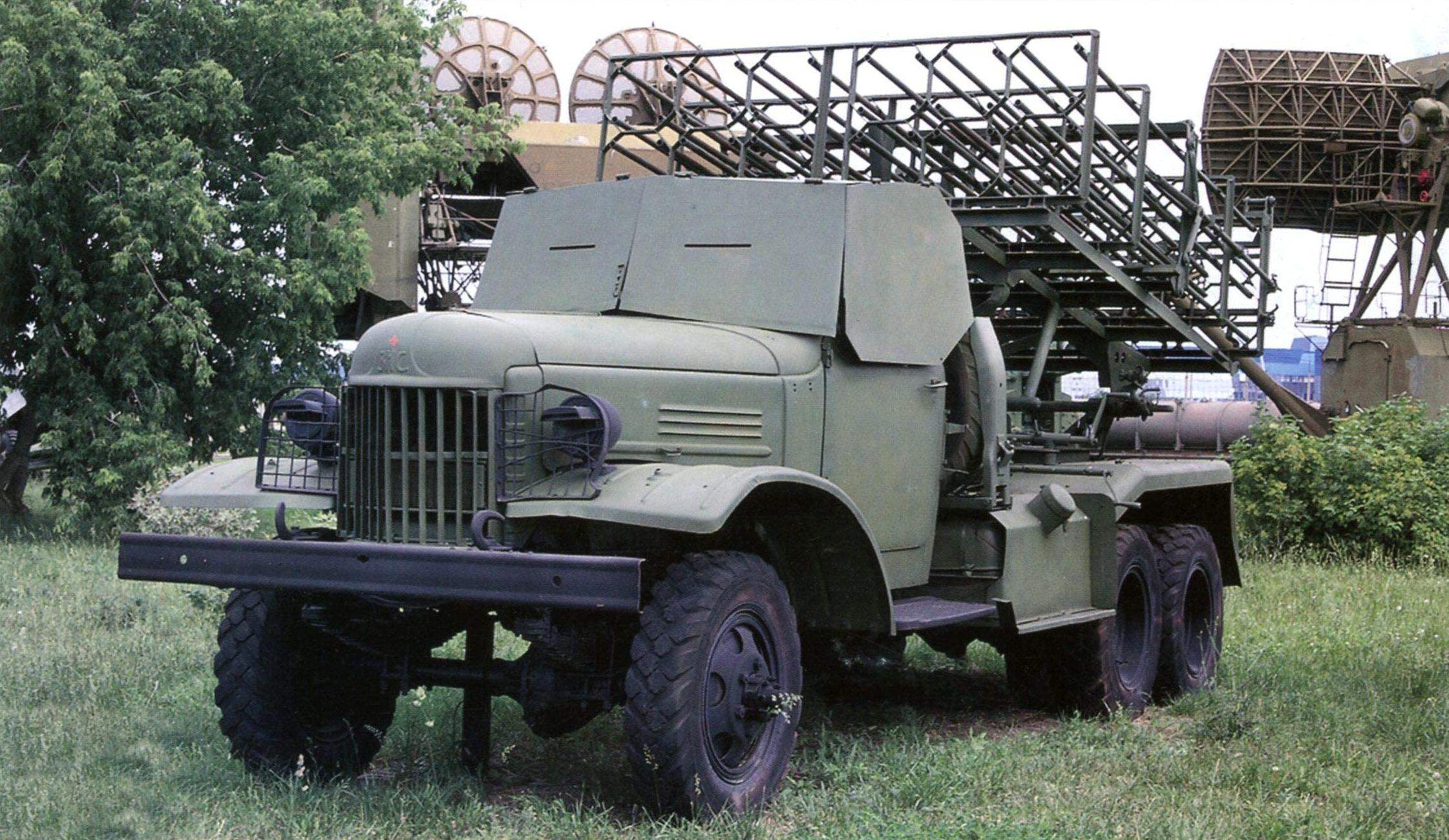
 Reactive BM-8-24. In August 1941, took arms 82-mm rocket M-8. It was a modification of the aviation RS-82 for use in the field artillery, which had almost twice the mass of the explosive. Creating launchers for M-8 instructed SLE Moscow plant № 733 “Compressor” with the participation of the Bureau of plant No. 37. Led the development of V. A. Timofeyev, a leading designer of chassis D. I. Sazonov. In machine design engineers used a series of nodes from the BM-13, as well as guides such as “flute” used in aviation.
Reactive BM-8-24. In August 1941, took arms 82-mm rocket M-8. It was a modification of the aviation RS-82 for use in the field artillery, which had almost twice the mass of the explosive. Creating launchers for M-8 instructed SLE Moscow plant № 733 “Compressor” with the participation of the Bureau of plant No. 37. Led the development of V. A. Timofeyev, a leading designer of chassis D. I. Sazonov. In machine design engineers used a series of nodes from the BM-13, as well as guides such as “flute” used in aviation.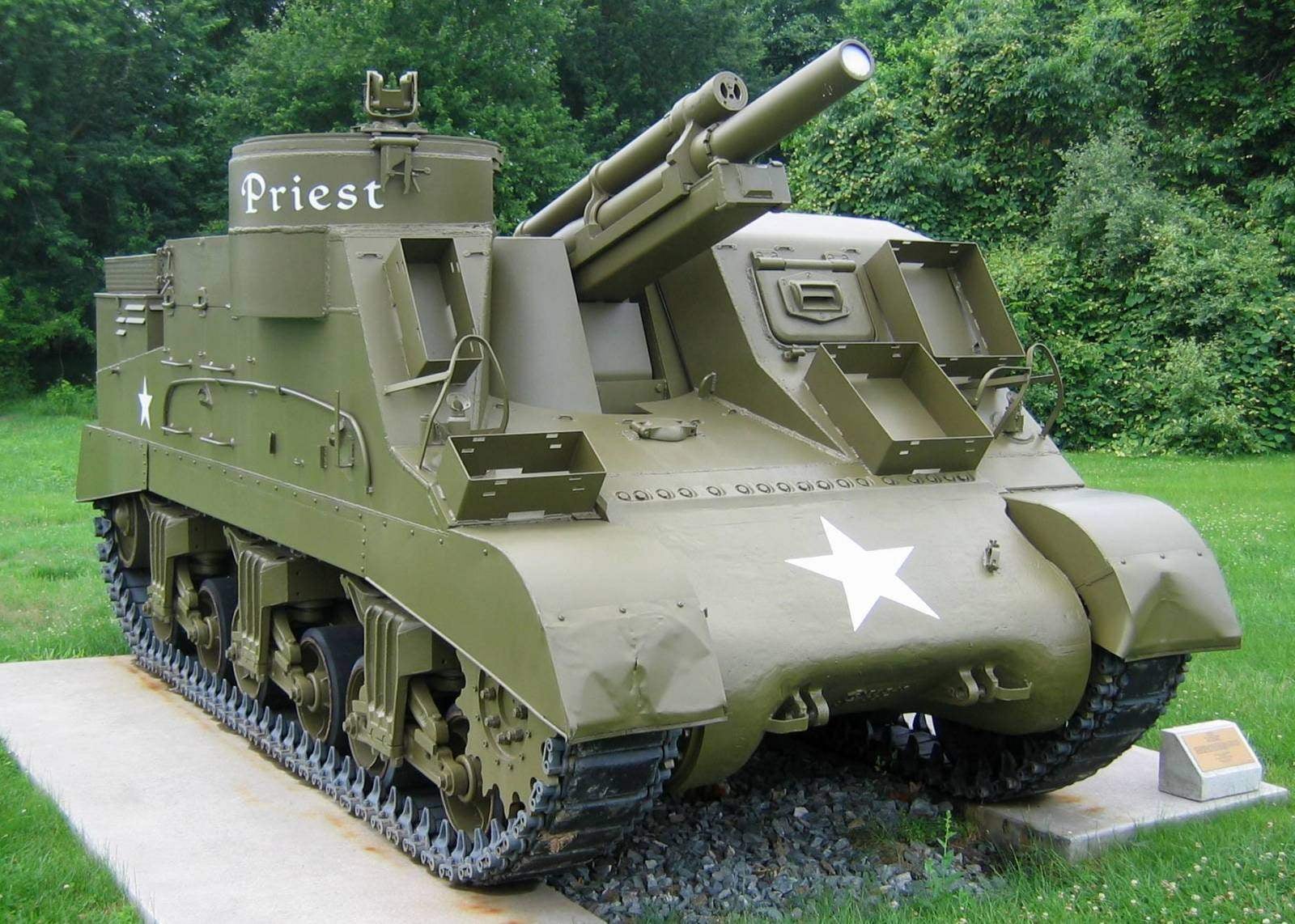
 Self-propelled artillery 105mm setting M7 widely known as Priest (“Priest”). She was the main American destroyer during the Second world war and one of the most numerous, released at this time. The weapon was in service with many artillery units and all units of the armored forces of the United States. It was accepted into service in April 1942 as the M7 105mm Howitzer Motor Carriage howitzer was the end of the war “circulation” in 4316 copies.
Self-propelled artillery 105mm setting M7 widely known as Priest (“Priest”). She was the main American destroyer during the Second world war and one of the most numerous, released at this time. The weapon was in service with many artillery units and all units of the armored forces of the United States. It was accepted into service in April 1942 as the M7 105mm Howitzer Motor Carriage howitzer was the end of the war “circulation” in 4316 copies.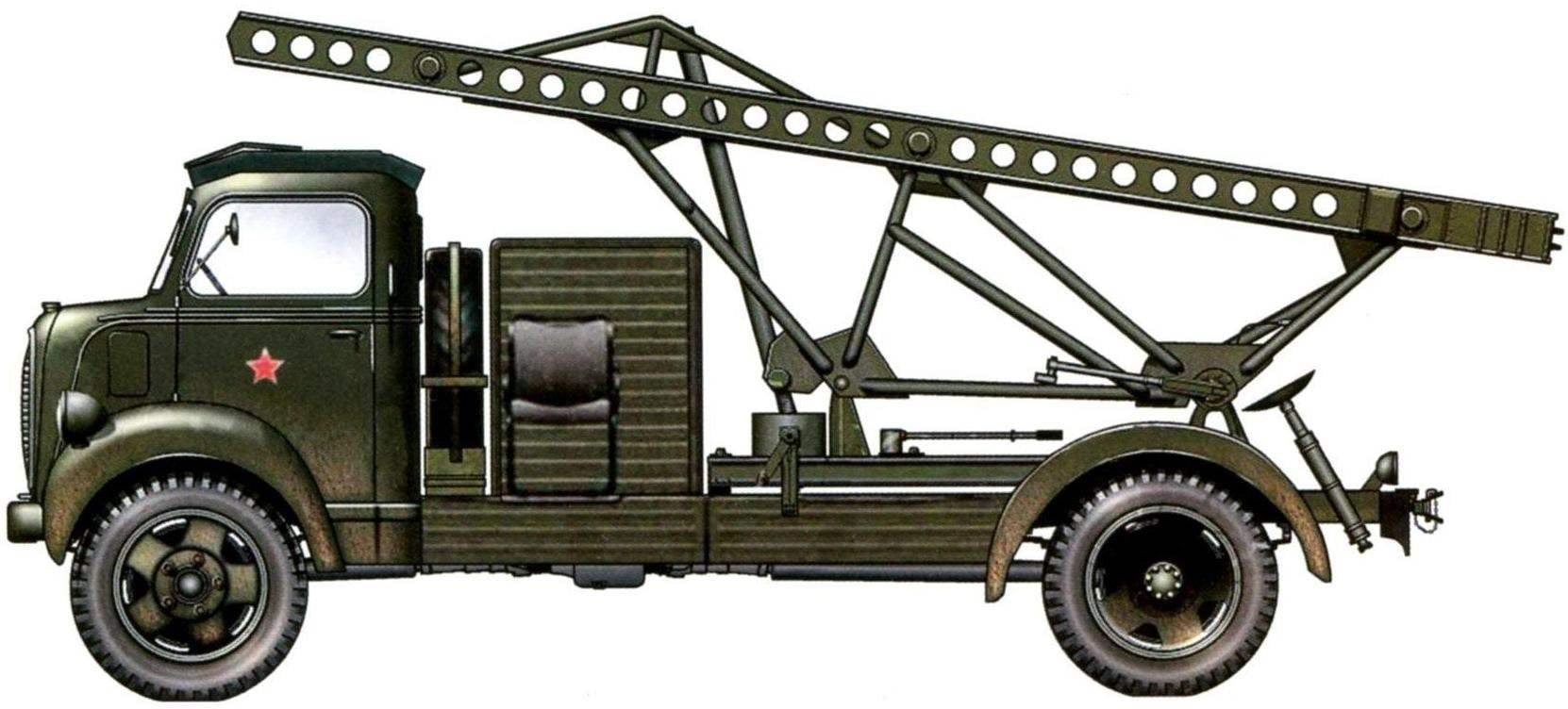
 The emergence of missiles in Russia noted by the chroniclers in the Pskov chronicle of the XV century In 1680 in Moscow organized a special “school” for the production of lighting and flares. In 1717, the Russian army was adopted grenade dynamites lighting signal, rises to a height of 500 fathoms (1 fathom = 2.13 m). In the eighteenth century in India, English General Convex designed their own patterns of missiles and achieved flight range of the missiles up to 3
The emergence of missiles in Russia noted by the chroniclers in the Pskov chronicle of the XV century In 1680 in Moscow organized a special “school” for the production of lighting and flares. In 1717, the Russian army was adopted grenade dynamites lighting signal, rises to a height of 500 fathoms (1 fathom = 2.13 m). In the eighteenth century in India, English General Convex designed their own patterns of missiles and achieved flight range of the missiles up to 3